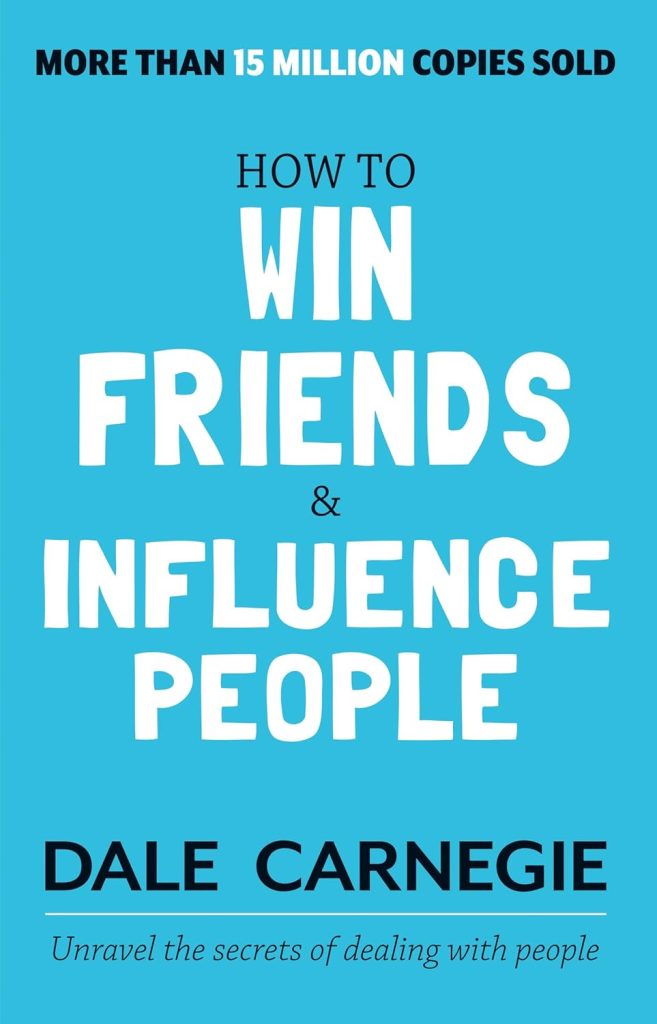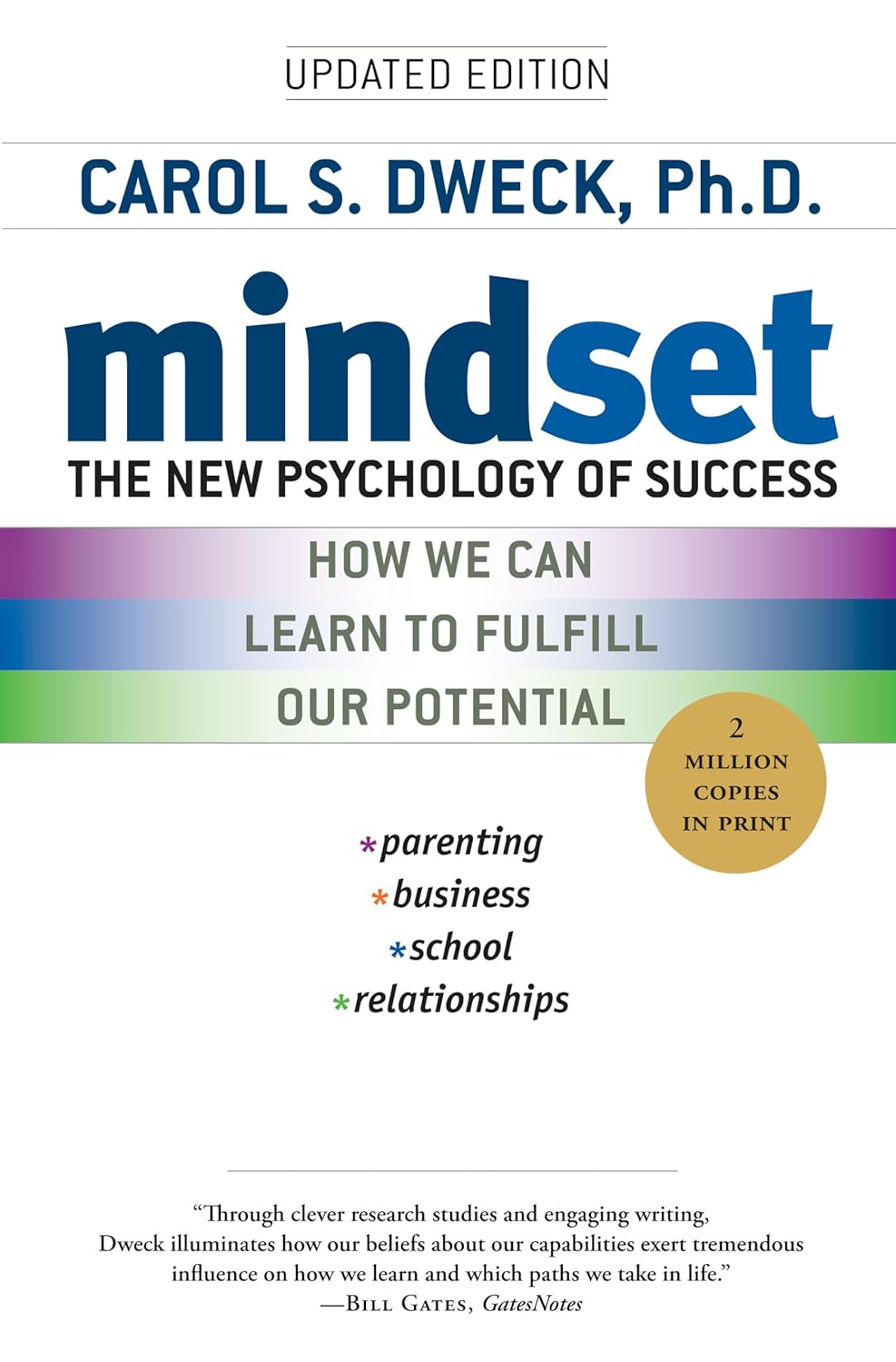
Buy The Book
Chapter
- ✦ How This Book Was Written—and Why
- ✦ “If You Want to Gather Honey, Don’t Kick Over the Beehive”
- ✦ The Big Secret of Dealing with People
- ✦ “He Who Can Do This Has the Whole World with Him. He Who Cannot Walks a Lonely Way”
- ✦ Do This and You’ll Be Welcome Anywhere
- ✦ A Simple Way to Make a Good First Impression
- ✦ If You Don’t Do This, You Are Headed for Trouble
- ✦ An Easy Way to Become a Good Conversationalist
- ✦ How to Interest People
- ✦ How to Make People Like You Instantly
- ✦ You Can’t Win an Argument
- ✦ A Sure Way of Making Enemies—and How to Avoid It
- ✦ If You’re Wrong, Admit It
- ✦ A Drop of Honey
- ✦ The Secret of Socrates
- ✦ The Safety Valve in Handling Complaints
- ✦ How to Get Cooperation
- ✦ A Formula That Will Work Wonders for You
- ✦ What Everybody Wants
- ✦ An Appeal That Everybody Likes
- ✦ The Movies Do It. TV Does It. Why Don’t You Do It?
- ✦ When Nothing Else Works, Try This
- ✦ If You Must Find Fault, This Is the Way to Begin
- ✦ How to Criticize—and Not Be Hated for It
- ✦ Talk About Your Own Mistakes First
- ✦ No One Likes to Take Orders
- ✦ Let the Other Person Save Face
- ✦ How to Spur People On to Success
- ✦ Give a Dog a Good Name
- ✦ Make the Fault Seem Easy to Correct
- ✦ Making People Glad to Do What You Want
How to Win Friends and Influence People

About
This book is a groundbreaking self-help book by Dale Carnegie, published in 1936. Carnegie, an influential lecturer and pioneer in self-improvement and interpersonal skills, created this enduring guide to enhance human interactions. The book presents essential principles for improving one’s ability to connect with others, offering pragmatic advice on managing relationships, winning people over, and influencing opinions without causing offense. It is rich with real-life examples and psychological insights, emphasizing empathy, sincere appreciation, and understanding others’ perspectives.
Divided into four parts, the book covers techniques for handling people, making people like you, winning others to your way of thinking, and becoming a leader. Its timeless advice has made it a staple for anyone seeking success in personal and professional interactions. Carnegie’s engaging style and practical approach continue to resonate with readers, making the book a cornerstone in the field of communication and human relations.
The book’s sales legacy is remarkable, with over 30 million copies sold worldwide. It became an international bestseller soon after its release and has been translated into nearly every known written language. Its enduring popularity is a testament to its universal appeal and relevance, cementing Carnegie’s legacy as a master in the art of communication.

Spark
Learn
Review
✦ How This Book Was Written—and Why
Since 1912, I’ve led courses for professionals on effective communication and human relations. Initially focused on public speaking, I soon realized the greater need was teaching peope how to build harmonious relationships. This book emerged from my experiences and the pressing demand for practical guidance in dealing with people. Despite reading extensively and consulting experts, I found no existing book met this need, so I decided to create one.
To prepare, I delved into a vast array of sources, from biographies to psychological studies, learning from historical leaders and successful contemporaries. I conducted interviews and distilled insights into a talk I gave in my courses. This talk evolved over time, enriched by real-life applications and feedback frol
m thousands of adults who tested these principles in their lives. This isn’t just theory; it’s a collection of proven techniques that have transformed lives, turning adversaries into allies and enhancing personal success and happiness.
✦ “If You Want to Gather Honey, Don’t Kick Over the Beehive”
On May 7, 1931, New York City witnessed an intense manhunt for “Two Gun” Crowley, a notorious criminal. Surrounded by police, he penned a letter claiming he had a kind heart, even as he was captured for his violent crimes. This illustrates a common trait among criminals: they rarely see themselves as wrongdoers. Al Capone, too, saw himself as a misunderstood benefactor, not a villain.
Reflecting on this, I realized that people seldom blame themselves for their misdeeds. Criticism often provokes defensiveness rather than change, as it attacks one’s pride and evokes resentment. B. F. Skinner’s research supports this, showing that rewarding good behavior is more effective than punishing bad. Criticism often backfires, causing the criticized to justify their actions. Understanding this, I learned that fostering goodwill and understanding is far more productive than scolding, paving the way for better relationships and cooperation.
✦ The Big Secret of Dealing with People
In dealing with people, I’ve discovered a crucial principle: everyone craves appreciation and recognition. This desire is a powerful motivator, often overlooked in daily interactions. When I sincerely acknowledge someone’s efforts, it not only boosts their morale but also strengthens our relationship. Remember, flattery is insincere and easily detected, but genuine appreciation is heartfelt and impactful.
Consider Charles Schwab, who attributed his success to his ability to inspire others. He always expressed genuine appreciation, which motivated his employees to excel. I learned that people work harder and more effectively when they feel valued. This concept aligns with philosopher John Dewey’s observation that the deepest urge in human nature is the desire to be important.
In practice, I’ve seen that taking a moment to thank others or recognize their contributions can transform attitudes and foster cooperation. It’s a simple yet profound secret to improving relationships and achieving success.
✦ “He Who Can Do This Has the Whole World with Him. He Who Cannot Walks a Lonely Way”
Handling people effectively hinges on understanding their desires. The key is to focus on what they want, not just what I want. I’ve realized that people are primarily interested in themselves, and this self-interest drives their actions. To connect with others, I first consider their perspective and needs.
For instance, when writing a letter, I emphasize how the other person will benefit, rather than listing my own demands. This approach aligns with what others naturally care about and opens doors to cooperation. I’ve found that by genuinely considering and talking about what others desire, I gain their attention and respect.
In my interactions, I’ve learned that aligning my objectives with others’ interests leads to mutual benefits. This principle is as true in personal relationships as it is in business. By prioritizing others’ needs, I build rapport and trust, which ultimately helps me achieve my own goals as well.
✦ Do This and You’ll Be Welcome Anywhere
To be universally welcomed, I’ve learned the power of genuine interest in others. People are drawn to those who show sincere curiosity and appreciation for them. Instead of trying to impress others with my own stories or achievements, I focus on encouraging them to talk about themselves. This approach makes them feel valued and understood.
For example, when meeting someone new, I ask questions about their interests and listen attentively. This simple act of showing interest creates a positive impression and fosters connection. I’ve noticed that when I genuinely care about what others have to say, they respond warmly and are more open to engaging with me.
In essence, by shifting the focus from myself to others, I make them feel important. This not only enhances my relationships but also ensures I’m welcome in any social setting. It’s a straightforward yet effective way to build rapport and create lasting bonds.
✦ A Simple Way to Make a Good First Impression
To make a strong first impression, I’ve discovered the simple power of a genuine smile. A smile conveys warmth and friendliness, instantly setting a positive tone. When I meet someone new, a sincere smile helps break the ice and makes the other person feel at ease.
Smiling is a universal gesture that transcends language barriers, showing that I am approachable and open to interaction. It has an infectious quality, often prompting others to smile in return, creating a friendly atmosphere. I’ve noticed that when I smile, it not only improves how others perceive me but also boosts my own mood and confidence.
In my experience, a smile can open doors and lay the foundation for meaningful connections. It’s an effortless way to show goodwill and create a welcoming environment. By simply smiling genuinely, I’ve found that people are more likely to remember me positively and are eager to engage further.
✦ If You Don’t Do This, You Are Headed for Trouble
I’ve realized that remembering and using people’s names is crucial for avoiding trouble in relationships. A person’s name is deeply personal and carries significant weight in interactions. When I make an effort to remember names and use them in conversation, it shows respect and consideration, making others feel valued.
Forgetting or misusing a name can create distance and resentment. I’ve learned that people respond positively when addressed by their name, as it acknowledges their individuality. This simple gesture can transform interactions, fostering goodwill and trust.
In my experiences, using names effectively has strengthened my connections and helped me navigate social and professional situations smoothly. It requires attention and practice, but the payoff is substantial. By prioritizing remembering names, I demonstrate attentiveness and respect, paving the way for more harmonious and successful relationships. Ignoring this can lead to misunderstandings and missed opportunities for connection.
✦ An Easy Way to Become a Good Conversationalist
To become a skilled conversationalist, I’ve found that the secret lies in being a good listener. People love to talk about themselves, and when I give them the space to do so, it makes them feel appreciated and understood. Instead of dominating conversations with my own stories, I focus on encouraging others to share theirs.
By asking open-ended questions and showing genuine interest in their responses, I create a welcoming environment for dialogue. This approach not only makes the other person feel valued but also enriches the conversation with diverse perspectives. I’ve discovered that listening more and speaking less often leads to deeper connections and more meaningful exchanges.
When I prioritize listening, I learn more about others and often find common ground. This strengthens relationships and leaves a positive impression. Being an attentive listener is a simple yet powerful way to enhance my conversational skills and foster engaging interactions with others.
✦ How to Interest People
To capture someone’s interest, I’ve learned the importance of talking about what they care about. Instead of focusing on my own interests, I find out what excites them and center the conversation around those topics. People are naturally drawn to discussions about their passions, so I make it a point to ask questions and listen attentively.
When I show genuine enthusiasm for what matters to them, it not only keeps the conversation lively but also builds rapport and mutual respect. I’ve noticed that by aligning my focus with their interests, I can engage them more deeply and create a lasting impression.
This approach involves being curious and adaptable, ready to explore subjects that resonate with the other person. By doing so, I demonstrate that their interests are important to me, which often leads to more meaningful and enjoyable interactions. Ultimately, showing interest in others’ passions is a surefire way to hold their attention and foster connection.
✦ How to Make People Like You Instantly
I’ve discovered that making people like me instantly involves showing genuine interest in them. When I focus on others and express sincere curiosity about their lives, it creates an immediate connection. Instead of trying to impress, I prioritize understanding and appreciating who they are.
A key strategy is to listen actively, asking questions about their experiences and opinions. This demonstrates that I value their perspectives, making them feel important and respected. I’ve noticed that when I genuinely care about what others have to share, it leads to warmth and rapport.
Additionally, offering sincere compliments can enhance this effect. By recognizing someone’s strengths or achievements, I foster a positive atmosphere and encourage goodwill. This thoughtful approach not only makes interactions enjoyable but also leaves a lasting positive impression. Ultimately, by focusing on others and valuing their contributions, I quickly earn their trust and liking, paving the way for meaningful relationships.
✦ You Can’t Win an Argument
I’ve realized that arguing is a lose-lose situation. Even if I “win,” I may lose the goodwill of the other person. When I engage in arguments, it often leads to defensiveness and resentment, rather than resolution. Instead of trying to prove a point, I’ve found it more effective to avoid confrontations.
When faced with differing opinions, I focus on listening and understanding the other person’s perspective. By acknowledging their viewpoint and showing respect for their ideas, I create a space for open dialogue. This approach not only defuses tension but also fosters mutual respect.
I’ve learned that it’s more beneficial to find common ground and collaborate towards a solution. By prioritizing harmony over winning, I build stronger, more cooperative relationships. Ultimately, steering clear of arguments and embracing understanding leads to more positive and productive interactions, allowing me to maintain goodwill and foster meaningful connections.
✦ A Sure Way of Making Enemies—and How to Avoid It
I’ve learned that correcting people directly is a quick way to make enemies. When I point out someone’s mistakes publicly or harshly, it often leads to embarrassment and resentment. To maintain harmony, I focus on avoiding unnecessary corrections and instead, approach misunderstandings with tact.
When I encounter errors, I try to address them gently and privately. By showing empathy and understanding, I prevent hurt feelings and maintain respect. I’ve found that framing suggestions positively rather than critically encourages cooperation and keeps the conversation constructive.
Creating an environment where people feel safe and respected fosters goodwill and open communication. By focusing on solutions rather than highlighting faults, I preserve relationships and avoid creating animosity. This approach not only prevents conflicts but also strengthens bonds, allowing for more effective and pleasant interactions. Emphasizing respect and understanding helps me navigate differences without making enemies, ensuring smoother and more amicable connections.
✦ If You’re Wrong, Admit It
I’ve found that admitting my mistakes openly is a powerful way to diffuse tension and build trust. When I’m wrong, acknowledging it upfront shows humility and courage, which often earns respect from others. This approach not only prevents arguments but also encourages others to be more forgiving and understanding.
Instead of defending or justifying my errors, I take responsibility and express a willingness to make amends. This honesty paves the way for open dialogue and resolution. I’ve noticed that when I admit my faults sincerely, it often prompts others to be more cooperative and less defensive.
By embracing my mistakes and showing a genuine desire to improve, I foster an atmosphere of trust and respect. This transparency not only strengthens my relationships but also sets a positive example for others. Acknowledging my errors helps me grow and maintain harmony, leading to more constructive and positive interactions with those around me.
✦ A Drop of Honey
I’ve realized that kindness is more effective than criticism when trying to influence others. A gentle approach, like a drop of honey, often yields better results than harsh words. When I confront situations with warmth and understanding, I find people are more receptive and cooperative.
Instead of starting with criticism, I begin with praise and appreciation, setting a positive tone. This approach opens hearts and minds, making others more willing to listen and engage. I’ve noticed that when I express kindness and empathy, it creates an atmosphere of goodwill and trust.
By choosing to be gentle and understanding, I avoid defensiveness and resistance. This method not only helps in resolving conflicts but also strengthens relationships. Offering kindness and respect allows me to guide conversations constructively, fostering collaboration and mutual respect. In my experiences, a little warmth goes a long way in achieving harmony and positive outcomes in interactions.
✦ The Secret of Socrates
I’ve discovered that adopting Socrates’ method of asking questions leads to agreement and cooperation. By guiding conversations with a series of questions that elicit “yes” responses, I create a positive and agreeable atmosphere. This approach helps others feel understood and respected, making them more open to collaboration.
Instead of starting with disagreements, I identify common ground and build on it. Asking questions that naturally lead to agreement helps ease tension and fosters a sense of partnership. Through this method, I’ve found that people become more receptive to my ideas and viewpoints.
By focusing on areas of agreement first, I establish a foundation of trust and rapport. This strategy not only makes discussions more productive but also enhances relationships. Like Socrates, I aim to guide conversations toward mutual understanding and consensus, ensuring smoother interactions and more successful outcomes. Emphasizing agreement from the start paves the way for cooperation and positive exchanges.
✦ The Safety Valve in Handling Complaints
When handling complaints, I’ve found that letting others express themselves fully acts as a safety valve, releasing built-up tension. Allowing someone to voice their frustrations without interruption shows that I value their feelings and am willing to understand their perspective.
By listening patiently and attentively, I give the complainer a chance to vent, which often diffuses their anger. This approach not only demonstrates empathy but also builds trust, making the person feel heard and respected. In my experience, once they’ve aired their grievances, they become more open to finding solutions.
After they’ve finished, I acknowledge their concerns and work collaboratively toward a resolution. This method not only resolves issues more effectively but also strengthens relationships. By providing a safe space for others to express their complaints, I foster a positive environment and encourage constructive dialogue, turning potential conflicts into opportunities for growth and understanding.
✦ How to Get Cooperation
I’ve learned that gaining cooperation involves making others feel that the idea is theirs. Instead of dictating or imposing my thoughts, I engage in discussions that lead them to conclusions. By asking questions and involving them in the process, I encourage ownership and commitment to the outcome.
When I present ideas as collaborative efforts, people are more inclined to support them. This approach fosters a sense of partnership and shared purpose, making others more willing to contribute. By valuing their input and respecting their perspectives, I create an environment where cooperation flourishes.
I’ve noticed that when people feel their ideas are acknowledged and valued, they become more enthusiastic and motivated. This strategy not only enhances teamwork but also leads to better solutions, as it combines diverse viewpoints. Encouraging others to see the project as their own fosters a cooperative spirit, ensuring more productive and harmonious interactions and ultimately achieving mutual goals.
✦ A Formula That Will Work Wonders for You
I’ve discovered a simple yet powerful formula for resolving disagreements: begin by acknowledging my own mistakes. When I openly admit any errors I’ve made, it sets a humble tone and encourages others to do the same. This approach helps to dissolve defensiveness and paves the way for constructive dialogue.
By starting with my own shortcomings, I demonstrate honesty and vulnerability, which often prompts others to respond in kind. This mutual acknowledgment of faults fosters an atmosphere of trust and openness, making it easier to address the issue collaboratively.
I’ve found that when I take responsibility first, it disarms potential conflicts and leads to more productive discussions. This strategy not only resolves disagreements more effectively but also strengthens relationships by showing that I value honesty and cooperation. Using this formula transforms challenging conversations into opportunities for growth and understanding, ensuring a positive and collaborative outcome for all parties involved.
✦ What Everybody Wants
I’ve realized that everyone desires to feel understood and appreciated. When I show genuine empathy and acknowledge others’ feelings, it fulfills this fundamental need. By taking the time to truly listen and understand their perspectives, I create a sense of connection and validation.
In my interactions, I’ve learned to express sincere appreciation for others’ contributions and efforts. This recognition makes them feel valued and important, fostering goodwill and cooperation. When people sense that their emotions and efforts are acknowledged, they become more open and receptive.
By addressing this universal desire, I build stronger relationships and facilitate smoother interactions. Whether in personal or professional settings, focusing on understanding and appreciating others is key to successful communication. This approach not only satisfies their need for validation but also enhances mutual respect and collaboration, paving the way for more positive and productive engagements. Recognizing what everyone wants helps me connect on a deeper level.
✦ An Appeal That Everybody Likes
I’ve discovered that appealing to noble motives is a strategy that resonates with everyone. When I focus on the positive intentions and higher values of others, it encourages them to act in accordance with those ideals. By highlighting the good in people, I inspire them to rise to the occasion.
In my interactions, I find it effective to frame requests in a way that aligns with their sense of integrity and honor. This approach not only shows respect for their character but also motivates them to contribute positively. By appealing to their better nature, I foster cooperation and goodwill.
I’ve noticed that when I emphasize noble motives, it creates a positive environment where people are more likely to respond favorably. This technique not only strengthens relationships but also promotes mutual understanding and respect. By focusing on the best aspects of human nature, I encourage actions that reflect those values, leading to more successful and harmonious outcomes.
✦ The Movies Do It. TV Does It. Why Don’t You Do It?
I’ve learned that storytelling, like in movies and TV, is a powerful way to capture attention and convey messages. When I incorporate stories into my communication, I engage others more effectively. A well-told story can illustrate points vividly, making them memorable and relatable.
In my experiences, I’ve noticed that people are naturally drawn to narratives, as they evoke emotions and create connections. By weaving stories into my conversations, I bring concepts to life and make my ideas more compelling. This technique not only entertains but also helps others see things from a new perspective.
Using stories allows me to communicate complex ideas in a simple and impactful way. It engages both the mind and heart, leading to deeper understanding and retention. By adopting this approach, I enhance my ability to influence and inspire, much like the captivating magic of movies and television. Embracing storytelling transforms my interactions, making them more dynamic and effective.
✦ When Nothing Else Works, Try This
I’ve found that when all else fails, an unexpected approach can break through barriers: appealing to others’ sense of drama and mystery. Introducing an element of surprise or intrigue captures attention and sparks curiosity. When conventional methods don’t work, this tactic can shift the dynamic and open new avenues for engagement.
In challenging situations, I try to present ideas in a way that arouses interest, perhaps by framing them as a mystery to be solved or a unique opportunity. This method not only piques curiosity but also encourages creative thinking and problem-solving.
By stepping outside the usual framework and adding an element of the unexpected, I can re-energize stagnant interactions. This strategy not only draws people in but also fosters enthusiasm and participation. When other approaches fall short, embracing creativity and intrigue allows me to connect in fresh, exciting ways, turning obstacles into opportunities for deeper involvement and collaboration.
✦ If You Must Find Fault, This Is the Way to Begin
When I find it necessary to address faults, I start with praise and appreciation. Beginning with a positive note softens the impact of criticism and shows respect for the other person’s strengths. This approach creates an atmosphere of goodwill, making it easier for them to accept feedback.
By first highlighting what they are doing right, I build confidence and demonstrate that my intentions are constructive. This technique not only eases defensiveness but also encourages openness and receptivity. I’ve noticed that when I frame feedback with initial compliments, it transforms potential conflict into a collaborative problem-solving session.
This method helps maintain the person’s dignity and fosters a positive relationship even when addressing issues. By leading with appreciation, I ensure that the conversation remains respectful and focused on growth, paving the way for constructive dialogue and effective resolution. This approach balances honesty with empathy, ensuring more harmonious and productive interactions.
✦ How to Criticize—and Not Be Hated for It
I’ve learned that to offer criticism without sparking resentment, I should sandwich it between genuine praise. By acknowledging someone’s strengths before and after delivering feedback, I maintain their self-esteem and show that my intentions are supportive. This method helps keep the conversation positive and constructive.
When I balance criticism with sincere compliments, it reduces defensiveness and makes the other person more open to my suggestions. This approach demonstrates respect and appreciation for their efforts, which fosters a cooperative spirit and encourages improvement.
I’ve found that this technique not only preserves relationships but also motivates change. By wrapping feedback in kindness and understanding, I can address issues effectively without damaging rapport. This strategy ensures that my criticism is seen as an opportunity for growth rather than a personal attack, leading to better outcomes and more harmonious interactions. It allows me to guide others constructively while maintaining mutual respect and goodwill.
✦ Talk About Your Own Mistakes First
I’ve found that addressing my own mistakes before pointing out others’ faults creates a more understanding and open atmosphere. By admitting my errors first, I show humility and establish common ground, making it easier for others to accept feedback.
When I acknowledge my imperfections, it demonstrates that I don’t see myself as superior, which helps reduce defensiveness. This approach fosters empathy and encourages a collaborative problem-solving mindset. It shows that everyone makes mistakes and that the focus is on learning and improving together.
I’ve noticed that this strategy not only softens the impact of criticism but also strengthens relationships by building trust and mutual respect. By sharing my own experiences, I create a safe space for honest dialogue and growth. This method transforms potentially uncomfortable situations into opportunities for understanding and development, ensuring that the conversation is constructive and that both parties feel valued and respected.
✦ No One Likes to Take Orders
I’ve realized that people resist being ordered around, so I focus on suggesting ideas instead of giving commands. By phrasing my requests as questions or proposals, I empower others to feel involved in the decision-making process. This approach respects their autonomy and encourages cooperation.
When I present tasks as collaborative opportunities, I foster a sense of ownership and involvement. This method not only reduces resistance but also motivates others to engage actively with the task at hand. I’ve found that people are more willing to contribute when they feel their input is valued and respected.
By avoiding direct orders and opting for inclusive language, I create a more positive and productive environment. This strategy strengthens relationships by promoting mutual respect and collaboration. It helps me achieve goals more effectively while maintaining harmony and goodwill, ensuring that everyone feels like a part of the team and is motivated to work towards shared objectives.
✦ Let the Other Person Save Face
I’ve learned the importance of allowing others to save face during interactions. When I handle situations with tact and sensitivity, I help preserve their dignity, even when addressing mistakes or disagreements. This approach fosters respect and maintains harmony in relationships.
By being considerate and choosing words carefully, I avoid making others feel embarrassed or humiliated. Instead of pointing out faults directly, I focus on offering support and understanding. This method encourages open communication and cooperation, as people feel respected and valued.
When I prioritize saving face, I strengthen trust and rapport, ensuring that relationships remain positive and constructive. This strategy not only helps resolve issues more effectively but also builds a foundation of mutual respect. By approaching situations with empathy and kindness, I create an environment where everyone feels comfortable and motivated to work together towards shared goals, enhancing collaboration and maintaining a positive atmosphere.
✦ How to Spur People On to Success
I’ve found that to motivate others toward success, emphasizing their strengths and potential is key. By recognizing and praising achievements, I inspire confidence and encourage further efforts. Highlighting what someone does well boosts their morale and drives them to strive for more.
When I focus on someone’s abilities and express belief in their potential, it creates a supportive environment that fosters growth. This approach not only uplifts their spirits but also instills a sense of pride and motivation to excel. I’ve noticed that people respond positively when they feel valued and capable.
By nurturing an atmosphere of encouragement and positivity, I help others see their own possibilities and set higher goals. This strategy not only enhances individual performance but also strengthens our relationship, as it shows genuine care and investment in their success. Encouraging others by spotlighting their strengths leads to a more driven and successful path forward.
✦ Give a Dog a Good Name
I’ve realized that giving someone a positive reputation to live up to can transform behavior. By highlighting qualities or potential I admire in someone, I encourage them to embody those traits. This approach sets high expectations and motivates them to meet or exceed them.
When I express confidence in someone’s abilities, it boosts their self-esteem and inspires them to maintain that positive image. This method fosters a sense of pride and responsibility, driving them to act in ways that align with the reputation I’ve helped establish. I’ve noticed that people strive to justify the trust and respect they’ve been shown.
By focusing on strengths and potential, I create an environment where people feel encouraged to grow and improve. This strategy not only enhances performance but also strengthens relationships, as it shows belief in their capabilities. Assigning a “good name” helps guide others toward success, fostering a culture of positivity and achievement.
✦ Make the Fault Seem Easy to Correct
I’ve found that when addressing mistakes, framing them as easy to fix encourages improvement. By downplaying the difficulty of correcting an error, I help others feel confident in their ability to overcome it. This approach reduces anxiety and fosters a positive mindset toward making changes.
When I reassure someone that the solution is straightforward, it alleviates fear of failure and motivates them to take action. This method builds confidence, as people feel capable of handling the situation effectively. I’ve noticed that highlighting simplicity encourages a proactive attitude, leading to quicker resolutions.
By presenting faults as manageable, I create an encouraging environment that supports growth and learning. This strategy not only facilitates problem-solving but also strengthens relationships, as it shows empathy and support. Making challenges seem surmountable helps others focus on solutions, promoting progress and fostering a sense of achievement and capability.
✦ Making People Glad to Do What You Want
I’ve learned that inspiring enthusiasm in others to fulfill requests involves aligning tasks with their interests and benefits. By showing how a task contributes to their goals or values, I make it appealing and meaningful. This approach turns requests into opportunities for personal gain or satisfaction.
When I connect the task to their motivations, people feel more invested and eager to participate. Demonstrating how their efforts make a difference encourages a sense of pride and ownership. I’ve noticed that when people see the value in what they do, they approach tasks with enthusiasm and commitment.
Creating a win-win scenario fosters cooperation and goodwill. This strategy not only ensures tasks are completed willingly but also strengthens relationships by showing respect for others’ aspirations and needs. Highlighting mutual benefits turns obligations into shared goals, making people glad to engage and contribute, resulting in a more positive and productive outcome.
For People
– Business professionals;
– Educators and trainers;
– Salespeople;
– Entrepreneurs;
– Personal development enthusiasts
Learn to
– Improved communication skills;
– Enhanced relationship-building techniques;
– Effective conflict resolution strategies;
– Increased influence and persuasion abilities;
– Boosted confidence in social interactions









